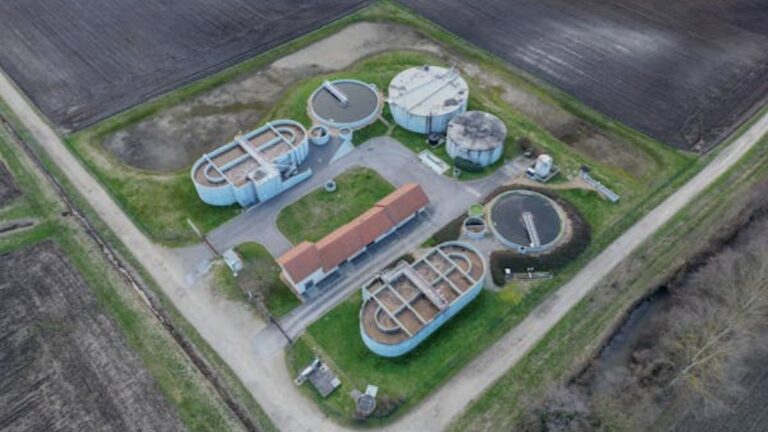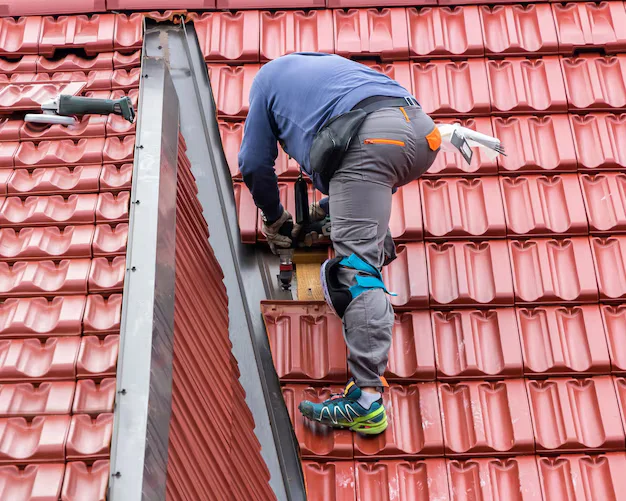Printed Circuit Boards (PCBs) are the backbone of virtually all modern electronic devices. From smartphones and computers to automotive systems and medical equipment, PCBs enable complex electronic functionalities in a compact form. The PCB manufacturing industry has evolved dramatically over the years, adopting advanced technologies and stringent standards to meet increasing demands for miniaturization, reliability, and performance. Understanding the entire process behind PCB production is essential for engineers, manufacturers, and technology enthusiasts who wish to grasp how intricate electronic circuits come to life, ensuring quality and innovation at every step.
Understanding PCB Manufacturing: The Heartbeat of Modern Electronics
What is a Printed Circuit Board (PCB)?
Definition and Purpose
A Printed Circuit Board (PCB) is a flat sheet that mechanically supports and electrically connects electronic components using conductive pathways, or traces, etched from copper sheets laminated onto a non-conductive substrate. These boards serve as the foundation for mounting components, facilitating signal transmission, and ensuring device functionality. The design and manufacturing of PCBs directly impact the durability, efficiency, and performance of electronic gadgets.
Why Is PCB Manufacturing Critical?
Role in Modern Electronics
In today’s electronics ecosystem, PCB manufacturing is not just about creating a physical platform; it’s about ensuring precision, reliability, and scalability. High-quality PCBs reduce electrical noise, improve signal integrity, and enhance thermal management — all vital for high-performance applications such as aerospace, medical devices, and consumer electronics.
Industry Growth and Market Trends
The global PCB manufacturing market is experiencing rapid expansion, driven by innovations like flexible PCBs, high-frequency circuits, and next-gen IoT devices. According to industry reports, the market is expected to grow at a compound annual growth rate (CAGR) of over 3% through 2030, highlighting the continuous demand for advanced PCB solutions.
Core Principles of PCB Design for Manufacturing Success
Design Considerations in PCB Manufacturing
Electronic Component Placement
Optimized placement minimizes signal interference, reduces electrical noise, and facilitates easier assembly. Designers must consider the size and thermal profile of components to ensure proper spacing and heat dissipation.
Signal Integrity
Maintaining consistent signal quality involves managing trace length, impedance, and shielding. Poor design can lead to data loss or malfunction.
Power Distribution
Effective power routing ensures stable voltage supply and prevents issues like voltage drops or parasitic inductance. Use of dedicated power planes and proper decoupling techniques are crucial.
Thermal Management
High-power components generate heat that must be effectively dissipated. Incorporating thermal vias and heat sinks enhances device longevity and performance.
Design Tools and Software for PCB Manufacturing
Popular CAD Platforms
Designers rely on tools like Altium Designer, KiCad, Eagle, and Mentor Graphics to create accurate schematics and PCB layouts. These tools facilitate automated checking, simulations, and generation of manufacturing files.
Design for Manufacturability (DFM)
DFM principles ensure the PCB design minimizes manufacturing issues, reduces costs, and shortens lead times. This includes considering trace widths, hole sizes, and component positioning that align with fabrication capabilities.
The Step-by-Step Process of PCB Manufacturing
1. Design and Layout
Creating Schematics
The initial step involves designing electronic schematics that define how components connect. Using specialized software, engineers map out circuit connections before transitioning to physical layout design.
PCB Layout Design
This stage translates schematics into a physical layout, defining trace routes, component placement, and layer stacking. Proper layout ensures signal integrity and manufacturability.
Generating Gerber Files
Gerber files are the industry-standard format that provide detailed instructions for each manufacturing step, including copper layers, solder mask, silkscreen, and drills.
2. Printing the PCB Design
Techniques Used
Methods like toner transfer or direct plate imaging are employed to transfer the PCB design onto the substrate. These techniques ensure high fidelity in reproducing circuitry patterns, vital for complex or multilayer boards.
3. Creating the PCB Substrate
Material Selection
Common base materials include FR-4, which offers a good balance of cost, electrical insulation, and mechanical strength, and Rogers substrates for high-frequency applications.
Preparation Process
The substrate undergoes cleaning and lamination to prepare for photoresist application, ensuring a smooth surface for subsequent processes.
4. Photolithography Process
Applying Photoresist
A light-sensitive coating is spread over the copper surface. UV exposure through a mask transfers the circuit pattern onto the resist.
Developing and Patterning
The exposed areas are developed away, revealing the copper beneath, which will be etched away in later steps. This process creates a precise pattern essential for circuit functionality.
5. Etching Unwanted Copper
Chemical Etching
Commonly using ferric chloride or ammonium persulfate, the unwanted copper outside the pattern is dissolved, leaving only the traces and pads.
Plasma Etching
For finer features, plasma etching provides a controlled process that enhances accuracy.
6. Drilling and Via Formation
Precision Drilling
Holes for component leads and vias are drilled with automated tools, ensuring accuracy and consistency. Typical drill bits range from 0.2 mm to 1 mm depending on design specifications.
Via Types
Through-hole vias, blind vias, and buried vias connect different layers, facilitating multilayer PCB design.
7. Metallization and Surface Finishes
Copper Plating
Post-drilling, vias and holes are plated with copper to establish electrical connectivity across layers.
Surface Finish Options
- Hot Air Solder Leveling (HASL)
- Electroless Nickel Immersion Gold (ENIG)
- Immersion Silver or Tin
These finishes protect the copper and improve solderability.
8. Applying Solder Mask
Purpose and Colors
The solder mask covers traces to prevent accidental solder bridges during component assembly. Green, red, blue, and black are common colors, with green being the industry standard.
9. Silkscreen Printing
Markings and Labels
This step adds component identifiers, logos, and other markings to assist during assembly and troubleshooting.
10. Cutting and Profiling
Defining PCB Edges
Routing or punching machines cut the PCB into its final shape, including slots or cut-outs required by the design.
11. Final Testing and Quality Checks
Electrical Testing Methods
Automated Optical Inspection (AOI), flying probe tests, and ICT (In-Circuit Testing) identify defects, ensuring each PCB meets strict industry standards like IPC-6012 and UL certifications.
Inspection for Defects
Visual inspections and x-ray examinations verify solder joints, vias, and layered structures, confirming reliability and compliance.
Types of PCBs and Manufacturing Variations
Overview of PCB Types
| PCB Type | Characteristics | Common Applications |
|---|---|---|
| Single-sided | Copper on one side, simple design | Basic electronics, LED lighting |
| Double-sided | Copper on both sides, complex routing | Computer motherboards, power supplies |
| Multilayer | Multiple copper layers separated by insulating layers | High-density servers, advanced smartphones |
| Flexible | Made with flexible substrates like polyimide | Wearable devices, medical implants |
| Rigid-flex | Combination of rigid and flexible layers | Aerospace and military applications |
Emerging Technologies and Future Innovations
Advanced Manufacturing Technologies
Surface Mount Technology (SMT) Assembly
Enables high-speed placement of components, reducing assembly time and increasing density.
Embedded Components
Integrates passive and active components within the PCB layers, saving space and improving performance.
Laser Drilling and Via Formation
Allows for microvias and through-holes with high precision, essential for high-frequency applications.
Automation and Robotics
Enhancing consistency, reducing errors, and increasing throughput in PCB manufacturing facilities.
Ensuring Quality and Compliance in PCB Manufacturing
Industry Standards and Certifications
| Standard/Certification | Scope | Relevance |
|---|---|---|
| ISO 9001 | Quality management system | Global benchmark for consistent quality |
| IPC-6012 | Qualification of printed boards | Ensures performance and reliability |
| RoHS | Restriction of hazardous substances | Environmental compliance |
| UL Certification | Product safety standards | Safety assurance for end-users |
Overcoming Challenges in PCB Manufacturing
- Material Selection: Choosing substrates and components that balance cost and performance.
- Miniaturization: Developing processes for smaller, high-density PCBs.
- Cost Management: Streamlining production without sacrificing quality.
- Sustainability: Implementing eco-friendly practices and recycling materials.
- Lead Times: Shortening manufacturing cycles to meet rapid market demands.
Looking Ahead: Future Trends in PCB Manufacturing
- Green Manufacturing: Use of environmentally sustainable materials and processes.
- IoT and Smart Manufacturing: Integrating sensors and AI for real-time quality control.
- Flexible and Wearable Electronics: Pushing innovations in bendable, lightweight PCBs.
- AI and Automation: Enhancing defect detection, process optimization, and predictive maintenance.
Summary Table: Key Aspects of PCB Manufacturing
| Stage | Key Processes | Critical Considerations |
|---|---|---|
| Design & Layout | Schematic creation, PCB layout, Gerber file generation | Design for manufacturability, signal integrity |
| Printing & Substrate Preparation | Design transfer, substrate selection, cleaning | Material properties, precision |
| Photolithography & Etching | Photoresist application, UV exposure, chemical etching | Pattern accuracy, aspect ratio |
| Drilling & Metallization | Hole creation, copper plating, via formation | Precision, layer connectivity |
| Surface Finishing & Masking | Solder mask application, silkscreen printing | Solderability, clarity of markings |
| Cutting & Inspection | Routing, AOI, functional testing | Defect detection, compliance |
FAQs About PCB Manufacturing
- What are the main materials used in PCB manufacturing?
- How long does it typically take to manufacture a PCB?
- What is the difference between rigid and flexible PCBs?
- How can I ensure the quality of my PCB design?
- What standards should I look for in reputable PCB manufacturers?
- What are the emerging trends shaping the future of PCB manufacturing?
Commonly used materials include FR-4 (fiberglass epoxy), Rogers substrates for high-frequency applications, and polyimide for flexible PCBs.
Standard production can range from a few days to several weeks, depending on complexity, volume, and the manufacturing process employed.
Rigid PCBs are solid and inflexible, suitable for traditional electronics, whereas flexible PCBs are bendable, enabling innovative device design like wearables.
Following industry standards, performing DFM analysis, and working with reputable PCB fabricators can help ensure high-quality outcomes.
Look for certifications like ISO 9001, IPC-6012, RoHS compliance, and UL certification to ensure quality and safety standards are met.
Trends include green manufacturing practices, embedded components, advanced via technology, and AI-driven quality control systems.
Understanding the comprehensive process of PCB manufacturing is crucial for developing reliable, high-performance electronic devices. As technology continues to evolve, the industry will likely see further innovations in materials, processes, and automation, making PCB production faster, greener, and more precise. For anyone involved in electronics design or production, staying informed about these trends and standards is essential to stay competitive in this dynamic field.
For additional insights into industry standards, consider visiting IPC or ISO websites.



















